Planning 101 for beginners: it’s all about what works for you
Getting started with personal planning can seem intimidating. So we’re exploring particularly useful planner tips that make it easy for beginners. The most important thing to remember is that your planner is a tool to help you get organized and manage your time better. There’s no right or wrong way to use it as long as your planner is helpful to you.
1) What to put in your personal planner
Let’s start at the beginning. What you put in your personal planner really depends on what you want to get out of it. However, the number one planner tip we have for beginners is to create a good foundation of basics and then add other elements based on your personal needs. Here are the basics everyone should put in their planner no matter what it’s used for:
- Weekly and/or monthly schedule
- Appointments
- Daily task list
- Goals
- Budgeting
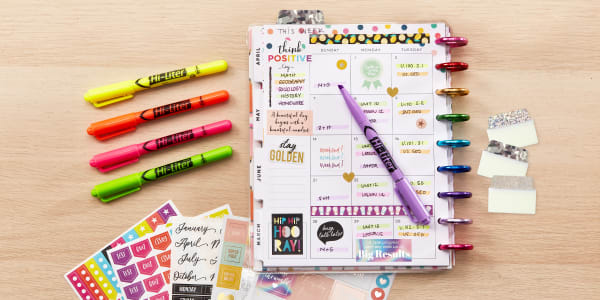
2) Make a list of what you hope to achieve
Knowing what you want to achieve will help inform many of the decisions you make when setting up your first personal planner. From basics like what kind of planner you’ll need to picking out planner stickers.
Here’s a list of common goals to help you get started:
- Managing a complex schedule
- Academic planning for students
- Academic planning for teachers
- Establishing new healthy habits
- Improving time management
- Documenting experiences
- Being more productive
- Budgeting and reaching finance goals
- Managing feelings of stress
- Wedding planning
3) Get in touch with what motivates you
Once you’ve decided what you want to use your planner for, decide on more specific things to include in it. For example, habit trackers, a yearly overview, journaling pages, a space for notes, or motivational elements.
Habit trackers, are fantastic tools for setting up healthy habits like drinking more water intake, getting more exercise, or remembering to take daily medications. A yearly overview is great if you’re managing a complex schedule such as your work hours, the kids’ after school activities, and family vacations. You’ll see upcoming plans at a glance so you can work out any conflicts.
Then there are journaling pages which can be helpful for managing your emotions. While extra space for notes is particularly useful for students and teachers. Of course, there are many ways to motivate yourself with your planner, from inspiring quotes and pictures of loved ones to using SMART goals to track your achievements.
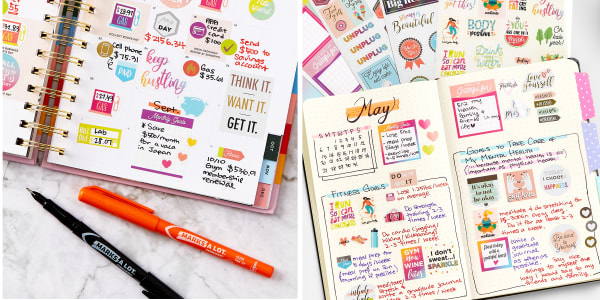
4) Explore traditional planners vs. bullet journals
What type of personal planner you choose will depend on your needs, your planning style and your personality.
For example, if your primary goal is keeping track of a schedule, then a traditional planner with monthly calendars is probably the best type of planner for you. A monthly calendar with large boxes for each day gives you room to fill in classes, events, or family appointments.
If the idea of too much structure makes you feel overwhelmed, or you need room to write or draw out ideas, then a bullet journal is probably the way to go. Bullet journals are also great for getting tips for balancing business and community if you have a small business “side hustle,” such as an Etsy shop or social club.
5) Start your planner any time of the year
A very important planner tip for beginners is: start whenever you want. Certainly, the beginning of the calendar year is a popular time to start using a planner, but you’re not required to begin in January. For many getting into planning, it feels like you only have this 1-2 month window from December to January or you’ve missed it— but that’s just not true!
While most traditional planners tend to go from January to December, undated planners like Avery 29876 offer all the benefits of a traditional planner but allow you to start whenever you want. Bullet journals also allow for flexibility. Another great idea is to make your own DIY planner stickers to cover dates and days in any planner.
January is not the start of everyone’s journey and that’s okay. If your goal is academic planning, start in August to help you better prepare for the school year. Planning a wedding? Start your wedding planner a year before your wedding date.
6) Shop around for essential planner accessories
Planner accessories are so fun to use. But, knowing which ones will work in your planner can be difficult for beginners. The choices may even feel overwhelming. Here are our best planner tips for beginners shopping for planner supplies.
- Beware of puffy stickers! A lot of stickers at craft stores are “puffy” or raised. You’ll need flat planner stickers or labels so that your planner pages lay flat.
- Go for markers with a fine point. Wide tip markers have their place, but planner pages have limited space. Ultra-fine point markers make it easier to write in smaller spaces.
- When in doubt, tab it. Index tabs are so useful for organizing and flagging important info in your planner or bullet journal. Repositionable tabs (like our Ultra Tabs®) make it easy to index your planner and change it up as needed.
7) Create a daily routine for using your planner
An essential planner tip for beginners is to decorate your planner. Yes, really! If you enjoy looking at your planner, you’re more likely to want to use with it every day. Our Pinterest board for planners, notebooks and journals is a great place to get inspiration and ideas for decorating your planner or bullet journal.
If you’re using a bullet journal, set up your index, future log, monthly log, and daily log pages using tabs to easily navigate each section. If you’re still learning about the different sections of a bullet journal, check out this helpful article where we break down how to organize bullet journal sections.
First use planner stickers to quickly fill in recurring appointments, holidays, and birthdays in your planner. You’ll be amazed at how quickly your planner starts to feel more personal when you just get the basics on there.
Lastly, create a routine for yourself. Set aside 15-20 minutes at the top of the week to fill in upcoming items and 5-10 minutes each day to review your daily agenda. Pick a time that works for you and set an alarm on your phone if you need a reminder.
Planner tips for beginners that set you up for success
Getting started with planning can seem intimidating. If you focus on planner tips that can help you be your best, it’s much easier to get started.
First decide what to put in your personal planner. The basics are a weekly and/or monthly schedule, appointments, a daily task list, goals, and space for budgeting. Then make a list of what you hope to achieve. This will help you figure out what kind of planner and accessories you need.
Next, spend some time getting in touch with what motivates you. This planner tip can help you decide on more specific things to put in your planner. For example, habit trackers, journaling pages, a yearly overview, SMART goals, or extra space for notes.
Follow up with exploring how traditional planners and bullet journals can be used differently. Don’t worry about forcing your preferences and personality into a specific format, pick a format that’s the right fit for you. Likewise, start your planner whenever you want. From custom planners, to DIY date cover stickers, there are tons of options to help you do so.
Then it’s time to shop essential planner accessories and fun planner stickers. Flat planner stickers, ultra-fine markers, and repositionable tabs are must-haves. Finally, create a daily routine for using your planner. Set aside 15-20 minutes at the top of the week and 5-10 minutes daily that are just for planning.
Do you still have questions about getting into planning? Ask us in the comments and we’ll do our best to help you out. You can also use #averyproducts on Instagram or connect with us on Facebook to share all your projects!

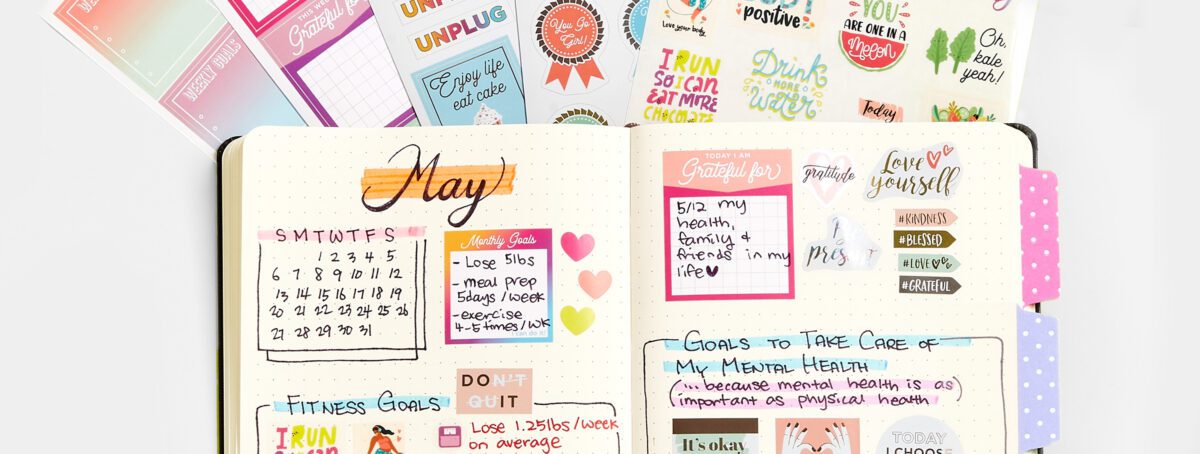
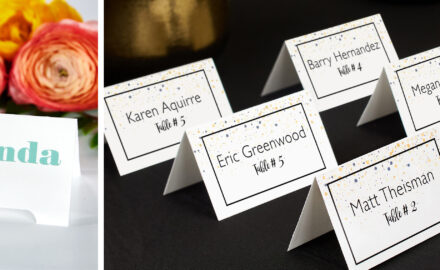

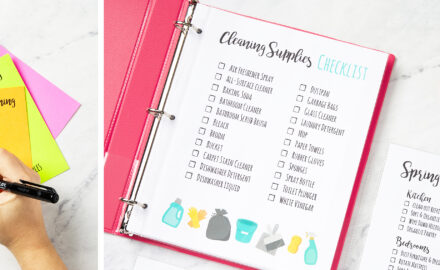
Great article! Thank you for the info – I love my Travelers Notebook (same as a planner) and I’m always looking for more tips and tricks!
Thank you Deb! JoJo, the article author is quite the planner fanatic and knows her stuff.
The Travelers Notebooks look amazing! Thank you for sharing and reading:)